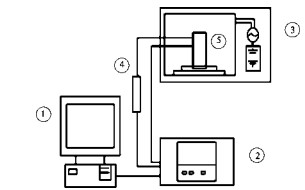Study on microwave drying characteristics of Masson Pine Wood
Abstract: The variation of microwave drying speed, temperature gradient and moisture content gradient of Pinus massoniana wood with time was studied. The experimental results show that the microwave drying process can be divided into three stages: acceleration stage, constant speed stage and deceleration stage, and the constant speed stage accounts for the largest proportion in the whole drying process. In the microwave drying equipment , the temperature changes can be divided into three stages: initial heating, isothermal and late heating. The temperature distribution in the wood is uniform in the initial heating and isothermal stages, and the temperature difference in the wood increases gradually in the later heating stage. In the process of microwave drying, the gradient of initial moisture content of wood was not enlarged in the whole cross section, but was homogenized, and even the surface moisture content of wood was increased.
Key words: Forestry Engineering; masson pine; microwave drying; drying characteristics; moisture content gradient
Microwave drying of wood is a relatively new drying technology, which has the advantages of fast drying speed and environmental friendliness. Chinese scientists and technicians have made many meaningful explorations and attempts in the field of wood microwave drying. Their researches mainly focus on the microwave drying equipment, technology and dielectric properties of wood under the action of microwave electromagnetic field [1-6]. The drying rate, temperature field and moisture content field of Pinus massoniana wood under microwave heating were studied. The results are as follows. The theoretical basis for the microwave drying process of Pinus massoniana wood was provided.
1 materials and methods
1.1 material
The tested material was Masson Pine mature timber, which was collected from Liuzhou, the Guangxi Zhuang Autonomous Region. According to the test requirements, the logs were processed into 50 m m and 65 m m thickness, 2 m length of the whole side board, put in the freezer for storage. During the test, the whole side saw is made of 45 mm and 60 thickness respectively.
Mm, with a smooth surface of 100, 200, 300 mm.
1.2 test device
The test device is mainly composed of mass weighing system, temperature detection system, microwave heating system and data acquisition system. In order to avoid the influence of microwave field on the measurement system, the temperature sensor and mass sensor are wrapped in aluminum foil to shield the microwave field. The microwave oven used is a domestic Panasonic frequency conversion microwave oven. The microwave oven was reformed before the test to meet the requirements of real-time quality and temperature detection during the test.
1.3 test method
1.3.1 Temperature Determination Method The size (100 mm long, 100 mm wide, 45 mm high) and the initial moisture content are first measured with epoxy resin and aluminum foil.
The same wood sample is sealed (end and side) so that moisture transfer and heat transfer occur only along the thickness direction of the wood. When the resin is fully cured, a drill with a diameter of 1 mm is used on the closed side. Three holes are drilled in the thickness direction of the wood. The depth of the hole is half the width of the specimen and the center of the hole is from the surface. The temperatures of the surface, middle and center layers of wood during microwave drying were measured by burying a 1 mm diameter double Pt-Rh thermocouple at distances of 2, 15 and 30 mm, respectively. The experiment is divided into 3 groups, and the 3 groups are microwave power.
They were 200, 500 and 800 W, 2 in each group.
The average temperature is measured 2 times.
2.1.1 quality continuous real-time detection method microwave power of 600 W, continuous heating. The end faces of specimens with specifications of 300 mm 100 mm 60 mm (length The quality of the resin is described before and after sealing. After the resin is fully cured, the initial mass of the sample is accurately weighed with a balance, and then the wood sample is placed on a tray in a microwave oven (material is
Fig. 1 Schematic diagram of microwave drying test device for wood
1. computer; 2. data collector; 3. variable frequency microwave oven;
4. temperature sensor; 5. test material; 6. mass sensor
Figure 1 Schematic diagram of experimental apparatus for wood microwave drying
(1) computer; 2. data acquisi tion instrument; 3. frequency conversion microwave oven; 4. temperature sensor; 5. test piece; 6. weight transducer
Polytetrafluoroethylene (PTFE), through the quality sensor connected with the tray, can realize the real-time detection of wood samples in the process of microwave drying.
The method for determining the distribution of 2.1.2 moisture content is: 200 mm x 100 mm x 60 mm. Because the total drying time is very short in the microwave drying process, if the specimen is taken out from the microwave oven, sawed and edged, and the adhesive layer is solidified and then continued to dry, the measured moisture content of wood layers will be very different from the actual value. In order to minimize the test deviation, five pieces of wood with a thickness of 60 mm, a width of 100 mm and a length of 1 200 mm were cut off from a plate with a length of 100 mm before the test. One piece of wood was measured at the initial state and the other four pieces were sealed with epoxy resin and aluminum foil respectively. The moisture content distribution in wood after microwave drying at different times was measured. The microwave treatment time of the four specimens was 5, 10, 15 and 20 minutes, respectively. The moisture content of 40 mm wide specimens was sawn in the middle of each specimen and divided into thin layered water content specimens. The moisture content was measured by weighing method.